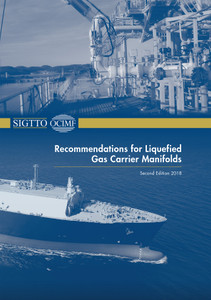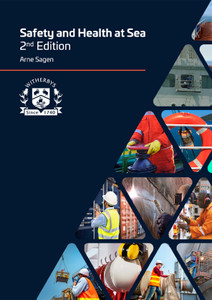
This publication from the CDI provides an overall understanding of the safe distribution of packaged chemical products by sea. It will reinforce existing knowledge of employees and managers, and serve as a consolidated informative guide for those new to the industry. It looks in detail at every stage of the supply chain, including risk management, regulations, packaging and cargo transport units, hazards and hazard classification, environmental protection, health and safety, emergency response and supply chain security.
Corporate success is built on reputation and good public image and it can easily be destroyed by a single accident or incident. More than ever before, companies in the chemical distribution industry must meet mandatory regulations and extensive training requirements. However, training is often restricted to a specific sector, resulting in managers, employees and contractors having limited understanding of the total marine supply chain. This surface knowledge creates risks that have to be mitigated to ensure a sustainable industry.
This publication provides insight into the entire marine logistic distribution supply chain and the responsibilities of chemical manufacturers and their service providers. It draws on the wide knowledge and experience of all stakeholders and participants in the CDI global "International Marine Packed Cargo Audit Scheme" (IMPCAS) and introduces the industry partners and their relationships within the supply chain.
The book explains the basic chemistry of products, the management systems and the regulations that control the transport of dangerous goods by sea. It simplifies the complexity of assessing and managing risk and outlines the procedures for health and safety, environmental performance, security and emergency response. The practices described support Corporate Social Responsibility within a company and the long-term sustainability of the supply chain, as well as helping to ensure the long-term environmental protection of the seas and the environment.
Focused on shipments by sea, the scope addresses the activities of all distribution supply chain sectors and service providers. The chain of custody is examined in detail, from the manufacturer’s warehouse to the export terminal and onward from the receiving terminal to the customer.
The book includes supplements of each CDI IMPCAS Audit Questionnaire.
Written by the Chemical Distribution Institute, the book is endorsed by Associated British Ports (ABP), the International Cargo Handling Coordination Association (ICHCA), the Responsible Packaging Management Association of Southern Africa (RPMASA) and the TT Club.
This book is not an Industry Standard or Code of Practice. The contents do not challenge the established in-depth guidance of other industry organisations, but provide a crossreference to those publications to ensure an overall understanding of the safe distribution of packaged chemical products by sea transportation.
The book is written as a practical sequential prompt, an aide-mémoire for employees and managers, and as a consolidated informative guide for those persons new to the logistics industry.
The commercial success of all companies is built on reputation. With the lightning speed and ferocity of modern media, a good public image in the international market place remains intact until the moment of an incident. Association, even suggested involvement with an accident or incident can destroy reputation, collapse share price and ultimately result in the demise of the company.
Contents
Endorsements
Acknowledgements
Figures and Tables
Bibliography
Glossary
Abbreviations
1
Introduction
1.1 Upstream
1.2 Downstream
1.3 Responsible Care®
1.4 Product Stewardship
1.5 Corporate Social Responsibility
1.6 The Costs of Mitigation
2
The
Distribution
Supply
Chain:
Partners
and
Relationships
2.1 Container Shipping Companies
2.1.1 Ship Owner
2.1.2 Ship Manager
2.1.3 Commercial Operator
2.2 Freight Forwarders
2.3 Freight Stations
2.3.1 Packers and Strippers
2.4 Shipping Agents
2.4.1 Port Agent
2.4.2 Liner Agent
2.5 Tank Container Operators
2.5.1 Tank Container Lessors
2.6 Container Terminals
2.6.1 Port Terminals
2.6.2 Hinterland Terminals
2.7 Subcontracting
2.8 Multiple Party Logistics (1PL, 2PL, 3PL…)
2.9 Supply Chain Integrity
3
Understanding
Risk
and
Consequence
3.1 Risk and Consequence in the Supply Chain
3.1.1 Duty of Care
3.1.2 Demonstrating Due Diligence
3.2 Risk Assessment
3.3 The Application of Quantitative Risk Assessment
3.4 Key Performance Indicators (KPI)
3.5 Risk Management
3.6 Obstacles
3.6.1 Regional Responsibilities
3.6.2 Choice Limitations
3.6.3 Bottom Dollar Rates/the "Low Cost Bidder"
4 Management Responsibility
4.1 Level 1 – Policies and Procedures
4.1.1 Framework Systems
4.1.2 Integrated Systems
4.1.3 Responsible Care®
4.1.4 Sustainability
4.2 Level 2 – Objectives and Management Plans
4.2.1 General Management
4.2.2 Management of Change (MoC)
4.2.3 Administration and Documentation
4.2.4 Customers and Contracts
4.2.5 Operations and Procedures
4.2.6 Personnel and Human Resources (HR)
4.2.7 Training and Competence
4.2.8 HSE&S
4.2.9 Inspection, Testing and Maintenance
4.2.10 Suppliers of Goods and Services
4.2.11 Security
4.2.12 Fall-back Plans and Emergency Preparedness
4.2.13 Audit
4.3 Level 3 – Operational Disciplines
4.3.1 Documentation
4.3.2 Customer Management
4.3.3 Operational Planning and Scheduling
4.3.4 Permit-To-Work (PTW) Systems
4.3.5 Maintenance
4.3.6 Training and Development
4.3.7 Incidents, Near Misses and Reporting
5
Chemical
Products
and
Basic
Chemistry
5.1 Chemical Groups
5.1.1 Chemical Gases
5.2 Molecular Structure of Chemical Compounds
5.3 Organic Chemistry
5.3.1 Aliphatic Hydrocarbons
5.3.2 Aromatic Hydrocarbons
5.3.3 Summary of Organic Chemistry
5.4 Petrochemical Products and Manufacturing
5.4.1 Common Petrochemical Production
5.4.2 The Polymer Industry
5.4.3 Oleochemicals
5.5 Examples of Inorganic Chemicals and Production
5.6 Dry Chemical Products
6
The
Regulations
6.1 The United Nations (UN)
6.2 The International Maritime Organization (IMO)
6.3 The International Maritime Dangerous Goods (IMDG) Code
6.3.1 The Layout of the IMDG Code
6.3.2 IMDG Code Chapter 3.2, The Dangerous Goods List
6.3.3 Training
6.4 National and Regional Transport Legislation
6.4.1 United States HAZMAT
6.4.2 European Agreement for the Transport of Dangerous Goods by Road (ADR)
6.4.3 European Agreement for the Carriage of Dangerous Goods by Inland Waterways (ADN)
6.4.4 Regulation concerning the International Carriage of Dangerous Goods by Rail (RID)
6.4.5 ASEAN Protocol on Dangerous Goods
7
Packaging
and
Cargo
Transport
Units
7.1 Packaging
7.1.1 Bottles, Jars, Cans and Outer Packaging
7.1.2 Drums
7.1.3 Jerrycans
7.1.4 Bags
7.1.5 Flexible Intermediate Bulk Containers (FIBC)
7.1.6 Pallets
7.1.7 Intermediate Bulk Containers (IBC)
7.2 Cargo Transport Unit (CTU)
7.2.1 ISO Shipping Containers
7.2.2 Container Inspection
7.2.3 Safety Approval Plate (CSC Plate)
7.2.4 Planning
7.2.5 Segregation
7.2.6 Securement
7.2.7 Verified Gross Mass (VGM)
7.2.8 Placarding
7.2.9 Documentation
7.2.10 Competent Authority – Certificate of Approval
7.2.11 Information for the Haulier
7.2.12 Information for the Shipping Line/Master
7.3 Bulk Containers
7.3.1 Design and Construction
7.3.2 Operations
7.3.3 Placarding and Shipping Documents
7.4 Tank Containers
7.4.1 ISO Tank Containers
7.4.2 Construction
7.4.3 Selecting the ISO Tank Container
7.4.4 Acceptance and Pre-loading Inspection
7.4.5 Placarding
7.4.6 Cleaning and Cleaning Stations
7.5 Flexitanks
7.5.1 Preparation and Loading
8
Hazards
and
Hazard
Classification
8.1 Safety Data Sheets
8.2 Fire and Explosion
8.2.1 Requirements for a Fire or Explosion
8.2.2 Possible Sources of Ignition
8.2.3 Static Electricity
8.2.4 Flammable Range
8.2.5 Limiting Oxygen Concentration (LOC)
8.2.6 Inert Gas and Flammability
8.2.7 Flash Point
8.2.8 Fire Point
8.2.9 Minimum Ignition Energy (MIE)
8.2.10 Auto-ignition Temperature
8.3 Toxicity, Corrosive and Reactivity
8.3.1 Toxicity
8.3.2 Corrosive
8.3.3 Reactivity
8.4 Health hazards
8.4.1 Toxic Products
8.4.2 Corrosive Products
8.4.3 Reactive Products
8.4.4 Personal Protective Equipment (PPE)
8.5 Environmental Hazards
8.6 Hazard Classification
8.6.1 IMDG Hazard Classification
8.6.2 Hazard Warning Labels and Placarding
9
Health
and
Safety
of
Supply
Chain
Personnel
9.1 Safe Practices and Continual Improvement
9.1.1 On-the-Spot Risk Assessment
9.2 Factors affecting Health and Safety
9.2.1 Heat
9.2.2 Cold
9.2.3 Noise
9.2.4 Vibration
9.2.5 Chemical Hazards
9.2.6 Biological Hazards
9.2.7 Manual Handling
9.2.8 Slips, Trips and Falls
9.2.9 Working at Height
9.2.10 Repetitive Strain Injury
9.3 Occupational Health
9.3.1 Pre-employment Health Checks
9.3.2 Employee Health Screening
9.3.3 Exposure and Risk-Based Routine Screening
9.4 Personal Protective Equipment (PPE)
9.4.1 Clothing
9.4.2 Head Protection
9.4.3 Footwear
9.4.4 Gloves
9.4.5 Goggles, Spectacles and Face Visors
9.4.6 Hearing Protection
9.4.7 Respiratory Protection
9.4.8 Safety Harnesses and Fall Protection
9.4.9 Product Specific PPE Matrix
9.4.10 Decontamination of PPE
9.5 Safety Signage
9.6 Vapour (gas) Detection
9.7 First Aid Equipment/Treatment
10
Environmental
Performance
10.1 Environmental Aspects and Impacts
10.1.1 Environmental Evaluation and Assessment
10.2 Carbon Footprint
10.2.1 Calculating the Carbon Footprint
10.2.2 Factors Influencing the Carbon Footprint
10.2.3 Limits of Data-collection
10.3 Waste and Recycling
10.3.1 Sources of Waste
10.3.2 Types of Waste, Commercial Value and Recycling
10.4 Plastics
10.4.1 Types of Plastic
10.4.2 Recycling and Re-using Plastics
10.4.3 Using Plastics in the Distribution Supply Chain
10.5 Emergency Response – Clean-up
10.6 Measurement of Environmental Performance
11
Emergency
Preparedness
and
Response
11.1 Risk Assessment
11.2 Emergency Preparedness, Policy and Performance Standard
11.3 Emergency Services and Mutual Aid
11.4 Emergency Response Plan
11.4.1 Contents of the Emergency Response Plan
11.4.2 ERP Monitoring and Review
11.5 Emergency Response Personnel
11.5.1 Training and Response Performance
11.5.2 Forward Incident Control Team
11.5.3 Emergency Main Control Team
11.5.4 Specialist Response Team(s)
11.6 Emergency Response Equipment
11.6.1 Inspection, Testing and Maintenance
11.6.2 Critical Equipment
11.7 Emergency Control Centre
11.7.1 Communication
11.7.2 Crisis Communication
11.8 Response
11.8.1 Fire
11.8.2 Spill
11.8.3 Vapour/Toxic Release
11.8.4 Medical
11.8.5 Local Community
11.9 Post Incident Clean-up and Recovery
11.9.1 Clean-up
11.9.2 Waste Removal and Remediation
11.9.3 Recovery
12
Supply
Chain
Security
12.1 Security Policy, Assessment and Plan
12.1.1 Security Policy
12.1.2 Security Risk Assessment
12.1.3 Security Plan
12.1.4 The Security Manager’s Role and Responsibilities
12.1.5 Monitoring and Measuring Security Performance
12.2 The Site
12.2.1 Security Training
12.2.2 Site Search Plans
12.2.3 General Site Security
12.2.4 Access and Exit Control
12.2.5 Preventative Measures
12.3 The Consignment
12.3.1 High Consequence Dangerous Goods
12.3.2 Service Agreements
12.3.3 Declaration
12.3.4 Tracking
12.4 Transport
12.4.1 Subcontracting
12.4.2 Intermodal Supply Chain Transport
12.4.3 Transit Routing
12.5 Security of Information and Cybersecurity
12.5.1 Threats
12.5.2 Computer Rooms
12.5.3 Computer Systems
12.5.4 Internet Access
12.5.5 Logging, Maintenance and Data Disposal
Supplement
1
IMPCAS
Questionnaire
Freight
Forwarder
Supplement 2 IMPCAS Questionnaire Container Freight Station
Supplement 3 IMPCAS Questionnaire Ship Agent
Supplement 4 IMPCAS Questionnaire Tank Container Operator
Supplement 5 IMPCAS Questionnaire Container Port Terminal
CDI
The CDI is a chemical industry organization, incorporated under the law of the Netherlands as the Stichting Chemical Distribution Institute (CDI) and operates as a non-profit making foundation.
CDI is managed by a Board of Directors consisting of seven individuals nominated by the participating chemical companies. The Board of Directors establishes policy and is responsible for overall affairs of the foundation. Individual Executive Boards are elected to oversee and direct the staff managing day to day activities for the Marine, Terminals and Marine Packed Cargo Schemes.
- Number of Pages:
- 290
- ISBN:
- 9781856098212
- Published Date:
- July 2019
- Binding Format:
- Hardback
- Book Height:
- 305 mm
- Book Width:
- 216 mm
- Weight:
- 1.6 kg
- Author:
CDI
- Preview:
- Yes





